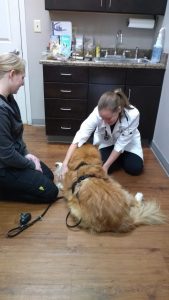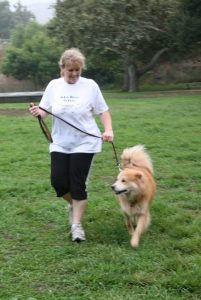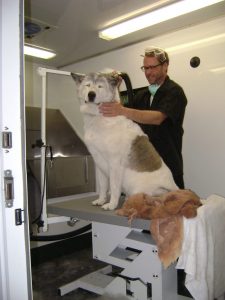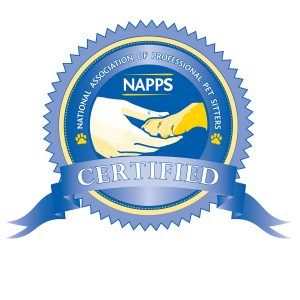
Some humans consider a second best friend a back-up plan, someone next in line if your bestie is not available to lend an ear, a shoulder or a good time. Some people feel like they are always a 2nd best friend, that they never hit the mark, the proverbial “always a Bridesmaid and never a Bride.” Some humans just carry too much baggage worrying about labels, which is something our animal friends do not! As the Pet Safety Crusader, I strongly encourage the idea of having other humans as a back-up plan for your pets! These people won’t feel the least bit slighted by the title because after all…YOU should be your dog or cat’s best friend! That title though, comes with a lot of responsibility, ensuring your best pal is cared for 24/7/365, so when you can’t be there, OR…when what your pet needs is beyond your skill set, that is where your pet’s SECOND BEST FRIEND steps in.
Call these peeps your pet’s body guards, entourage or “people,’ but I choose to think of second best friends as your pet’s health and safety team! These caregivers should include your Veterinarian, Emergency Center Personnel, Obedience Trainer, Groomer and Professional Pet Sitter. They should all be well-vetted by you and your dog or cat!
Depending on your lifestyle or pet’s needs, you may also consider: Boarding or Daycare Staff, Dog Walker, Animal Behaviorist, Animal Communicator, Holistic Veterinarian, Massage Therapist, Acupuncturist and/or Nutritionist along with various medical specialists.
Additionally, you must designate 2-3 people who could care for your pet in the event you are unable to and have paper work in order to make sure your wishes are honored.
Let’s break it down, for your pet’s sake 🙂
- Veterinarian

Consider your Veterinarian’s qualifications, but also:
- Location, office hours, payment options, range of services
- Can you get an appointment quickly?
- Is your Veterinarian’s philosophy and openness to alternative treatments in line with your own beliefs?
- Does the Veterinarian have a good bed side manner and answer questions to your satisfaction?
Knowledge and expertise are wonderful things, but since you speak for your pet who cannot, you must put together a team of humans that YOU and your pet can relate to and build a good rapport with.
Ask friends if they like their Veterinarian and notice:
- If the office is clean
- If the waiting room accommodates multiple pets including separate areas for different species
- If the front office staff is helpful and tend to stay or is that a lot of turn-over
- If the clinic is a member of the American Animal Hospital Association (AAHA) which means they have met certain standards.
- An added benefit is if the clinic, staff and veterinarians are Fear Free® Certified meaning they will do their best for your pet’s stress as well as his health.
- The office environment and the interactions of staff, noting if people and pets are treated in a manner you are comfortable with, if there are safe waiting areas and if the general care and vibe fits your needs.
Bring your pet to the Veterinarian for
- Annual check-ups
- Vaccinations
- Spay/Neuter
- Senior exams including blood panel and urinalysis
- Anytime something is not quite right.
2. Animal Emergency Center
Some are open 24/7 while others keep the hours your Veterinarian is closed…6pm – 8am the next morning. Find the one nearest your home, your favorite park or hiking location and wherever your dog goes and DRIVE THERE! Writing down the address and phone number is not enough. When an emergency happens you must be on auto-pilot and know where you are headed for your pet’s sake.
Must Know:
- Where the office is located
- Where to park
- What entrance you will bring your dog in (If you have a 100 lbs. dog that can’t walk, this can be of major importance) and if there is a separate entrance for kitty
- What services can be provided – Is the facility equipped for x-rays, MRIs, transfusions, surgeries? Do they carry antivenin for snake bites? Do your research and be prepared before you need to help your pet.
- Payment options
Whether an emergency or routine care, veterinary insurance could help you help your pet when your bank account cannot. Check into the various options and restrictions, researching which plan is best for you and the current dog and/or cat in your life. Deductibles and procedures covered vary from policy to policy. Should you opt not to purchase insurance, you may be preventing your pet from getting much-needed care, so have a Plan B! At the very least, have an emergency credit card or a separate bank account that you contribute to monthly in the event your furry loved one needs medical care.
3. Dog Obedience Trainer

Every pet needs manners and someone to teach them to him! If hiring a professional dog obedience trainer isn’t in your budget, you must then take the time to learn to speak dog by educating yourself and then paying attention to your pooch. There are many ways to train but you need to make an intelligent or educated decision about which method is best for your individual dog. In the long run, spending money on a professional trainer often outweighs money spent repairing items a destructive pet may have destroyed or the hospital bills incurred when your dog hasn’t learned to not run into traffic or has consumed something hazardous. All dogs do not need to run circles between your feet, balance a cookie on his snout or sneeze on command, but ALL dogs need to learn basic obedience
to become welcomed members of the family! “Come” can help your dog stay out of harm’s way. “Sit” means “please” in doggie terms while “Leave it” could prevent him from ingesting poison! Humans have boundaries and do best when courteous so our four-legged companions must be taught to do the same for a happy and safe lifetime together, and realize…this includes feline pals as well.
Ask your friends, Veterinarian, groomer, local pet store and surf the internet. Finding the right Obedience Trainer may require you to observe several classes as each uses different techniques and methods.
Only YOU can determine the trainer whose methods you feel most comfortable with because after all…an Obedience Trainer trains YOU to train your pet!
You then must work consistently EVERY DAY, several times in short 5 – 10 minute sessions. Repetition is key. Don’t expect to take your dog to a 6-week class/1-hour per week and have him trained. Learning takes place on a daily basis at home with you and continues throughout his lifetime. You CAN teach an old dog (or a puppy or a cat) new tricks and especially manners and should continue to do so to keep his mind sharp and you engaged in his life.

4. Groomer
Most people think of this team member as the beautician, but there is much more to a groomer than the fur on your cat or dog! The groomer, even more than your Veterinarian, gets down to your pet’s skin and can notice eruptions, cuts, scrapes, allergies and rashes. Your groomer may find a bump while bathing your cat or notice your dog’s ears are infected. Choose your groomer well, and he or she may be your pet’s first line of defense in finding a problem before it becomes a nightmare.
5. Professional Pet Sitter
Although the enthusiastic neighborhood teen who loves your dog or cat may be a good choice to watch him or her when you’re away, please hire a professional pet sitter for your fur kid. The person caring for your best friend must take the responsibility to heart and seriously prepare to handle whatever life throws their way when caring for a precious life. Your pet’s sitter should be licensed, bonded and able to anticipate a situation BEFORE it arises with the confidence to handle it. Yes, you want a true blue animal person who will greet your pet, maybe even before he or she greets you, but also one who can read animal body language and observe mood changes. You also need someone who can carefully place kitty in and out of her carrier, administer medications or divert an incident with other dogs when out walking yours. Someone who will follow your directions to a tee and check twice that your dog’s harness is securely fastened. Knowledge, experience and dependability are key traits to seek out in your pet’s caregiver.
Just as you should, a professional pet sitter keeps on learning better ways to relate to and care for animals, can safely administer Pet First-Aid & CPCR and must know what to do if the power goes out or a pipe breaks when you are away — for your pet’s sake. A professional pet sitter prides him or herself on staying current on all things pet — the latest in nutrition, exercise, safety and care, so they are an excellent resource for you as well. Seeking a recommendation from other conscientious pet parents or your Veterinarian (many Vet techs pet sit on the side) is a GRRReat choice, but professional organizations, such as Pet Sitters International™, can provide you with a list of certified professional pet sitters in your area. PSI and NAPPS (National Association of Professional Pet Sitters) provide on-line and in-person trainings to their members, provide excellent guidelines to keep them organized with their sits and motivate them to be the best pet caregiver they can be.
Once you have chosen a reliable pet sitter, make sure you put into place any authorizations needed on your pet’s behalf, so that the pet sitter may obtain necessary care for your dog or cat in your absence. Put everything in writing that your pet’s caregiver should know including medical history, food, places pet sleeps and hide. Talk with your Veterinarian’s office to determine if a letter is required (and possibly your credit card) to be kept on file to allow your pet sitter to make medical decisions for your pet if you are not reachable. Discuss this also with your pet sitter, so that he or she knows to what extent you want medical care for your pets and who you want providing treatment for them.
 6. You – Your Pet’s Guardian
6. You – Your Pet’s Guardian
Tune in to your pet every day to notice subtle changes and stay in-the-know to get the latest information on how you can help your pet live a longer, happier healthier life! Don’t be on the cell phone when walking Fido or watching TV while playing with Fluffy — give them your undivided attention for at least 20 minutes each day and even more time just spent near or with you.
Be proactive and don’t wait for tragedy to strike. Keep a simple Identification Card in your wallet to let first responders know you have pets at home that need caring for if something happens to you. Can you imagine your poor dogs trying to “hold it” for days or wondering when you’ll be home to feed them if you haven’t made this plan? Besides filling out the paperwork, you MUST be sure that caregivers you designate are totally on board and know how you’d like your pet cared for. Include funds for them to do so. Hopefully this care will just be short term, but it is wise to meet with an attorney and put everything in writing. Publish this document, making sure others know it exists and that these are your wishes. This should NOT be part of your Will as it could need to be enacted while you are still alive, such as if you are in a coma or suffer some other disability that will not permit you to care for your best friends. Don’t let your fur kids be relinquished or sent off to a Shelter because you didn’t take the time to plan for them. You can’t assume family members will make them their own. Get everything legally prepared and confirm with all parties involved. Also designate at least 2-3 caregivers as circumstances in their own lives may have changed when they are needed most.
Having a health and safety team for your pet just makes good sense, and it’s the best way to cover your bases in helping him or her live a longer, happier and healthier life by your side!











